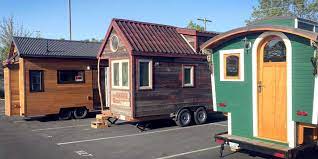Tiny homes are becoming more and more popular, as people are looking for ways to downsize and simplify their lives. While there are many benefits to living in a tiny home, there are also some drawbacks that you should be aware of before deciding to move into one.
For starters, tiny homes are typically a lot cheaper than traditional houses. This is because they require fewer materials to build, and they often don’t have all of the amenities that you would find in a traditional home. Additionally, tiny homes are often easier to maintain, as they require less space for cleaning and storage.
In this article, we take a look at other differences one can expect when one chooses to live in a tiny home.
Size – tiny homes are usually around 200-400 square feet, while traditional homes can be anywhere from 1000-5000 square feet or more. Of course, some tiny houses can even be smaller- or larger, but it’s often significantly less than a regular house.
Mobility – since tiny homes are usually on wheels, you can easily move them from one location to another with a truck and a dolly. This makes it easier to live in areas where the average rent is high, and then move somewhere else when you want a change of pace or scenery. Traditional homes cannot be moved nearly as easily.
Energy-efficiency – in general, tiny homes are more energy-efficient than traditional houses because they require less space for heating and air conditioners. This also makes them much cheaper to maintain in the long run.
Appliances – When it comes to appliances, there is usually a tradeoff between size and functionality with tiny homes. Most tiny homes have smaller washers, dryers, fridges, and stoves. However, this is largely dependent on the type of tiny home you are looking to purchase.
Look – with tiny homes, it’s very important to research the different types available, so that you can find one that looks appealing to you. Some of them look similar to regular houses, while others are more aesthetically-pleasing, featuring sleek designs and modern colors.
Air circulation – due to their small size, one thing to keep in mind with tiny homes is that air circulation can sometimes be a problem. This means it’s good to keep the windows open throughout the day if you’re living somewhere where it’s hot outside and make sure there is adequate ventilation throughout the house as well.
Neighbor relations – tiny homes are often positioned in a way that makes them very visible to many of the neighbors in a community. This can often result in some uncomfortable confrontations with the people living around you, especially when they do not approve of your choice of lifestyle.
Energy bills – since tiny homes are more energy-efficient than traditional houses, their owners usually end up spending less on their energy bills. For some owners, this difference can be as much as $200-300 per month.
Toilet – most tiny homes do not have a separate room for the bathroom and instead choose to utilize a composting toilet, which is similar to a regular toilet just without the tank attached to it. This means there’s no need to worry about flushing or filling up the toilet with water.
Drain – another difference between tiny homes and traditional houses is how you drain your wastewater. For instance, most tiny homes use a bucket to catch their wastewater and then pour it into a larger sink for disposal later on. This means that you cannot do all of your dishes or laundry in the same place where you take care of other tasks.
Closet – tiny homes typically have at least one closet where clothes can be stored, but traditional houses often come with multiple closets (and sometimes even walk-in closets) for storing clothing and other household items.
Personal belongings – when you transition into a tiny home, it’s important to carefully consider how much space each of your belongings will take up. For some people, this means purging many of their old clothes and other household items, while for others it simply means not purchasing too many new things unless they plan on using them regularly.
Conclusion
The differences of living in a tiny home are many and varied, but they don’t all have to be disadvantages. Others will enjoy not having any neighbors close by who might make them feel uncomfortable about their lifestyle choices. Additionally, when transitioning into this type of living situation it’s important to consider how much personal belongings you’ll need for your new life so as not to overwhelm yourself with too much clutter!
Meta title: Tiny Home Living Differences You Need to Know
meta desc: There are a lot of differences that comes with living in a tiny home, and here are some of the most significant ones.

